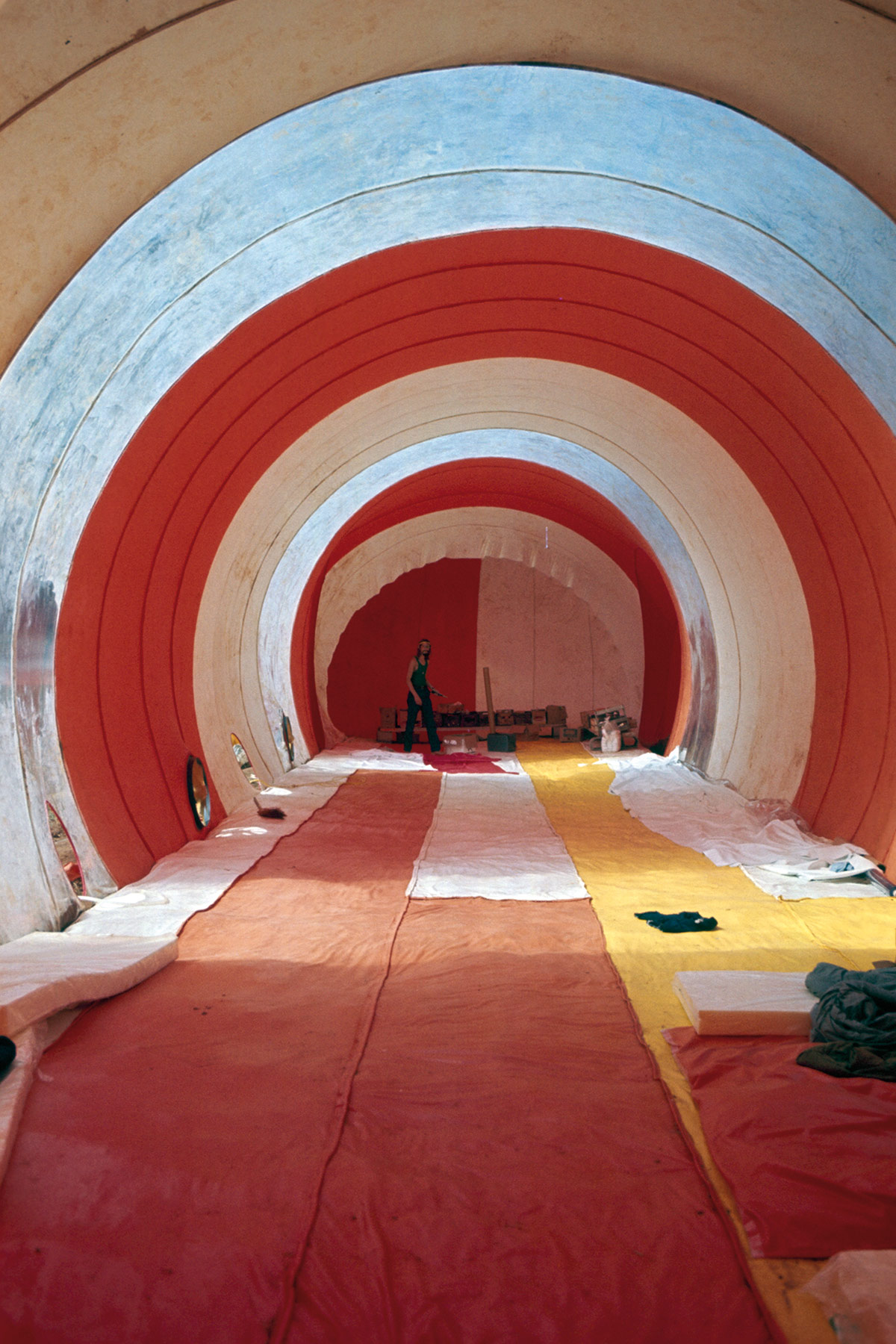Instant City
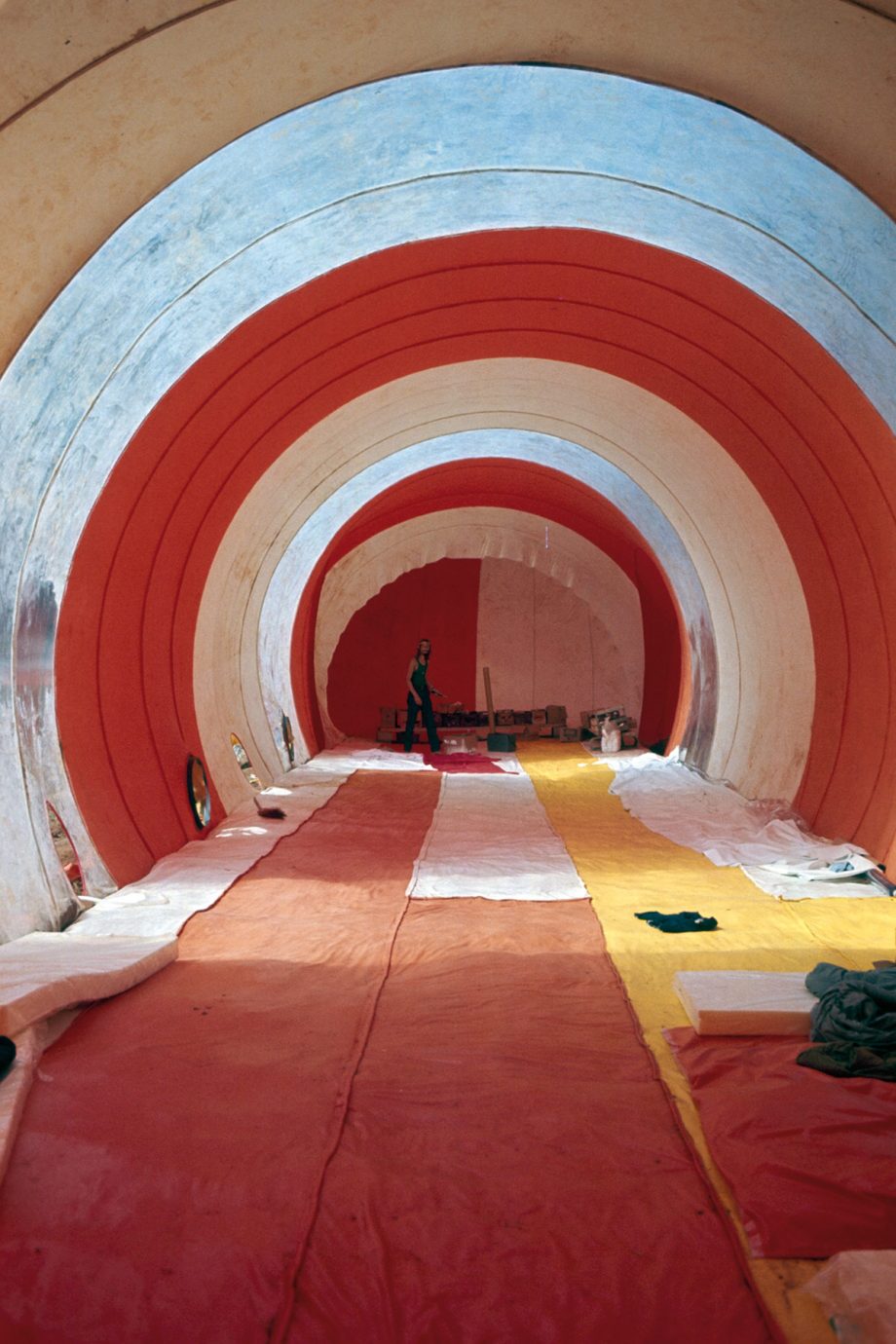
WORDS BY CARLOTA MARQUINA PHOTOGRAPHY BY ALBERT FONT AND JOAN ANTONI BLANC
The VII International Council of Societies of Industrial Design, ICSID 71, was held in 1971. The project was conceived as a point of convergence between design and the most experimental forms of art and architecture. The Industrial Design Association of the Promotion of the Decorative Arts of Barcelona (ADI- FAD), founded in 1960, was in charge of organising the congress. At the same time, and with the aim of opening up the congress and allowing young people and students to participate.
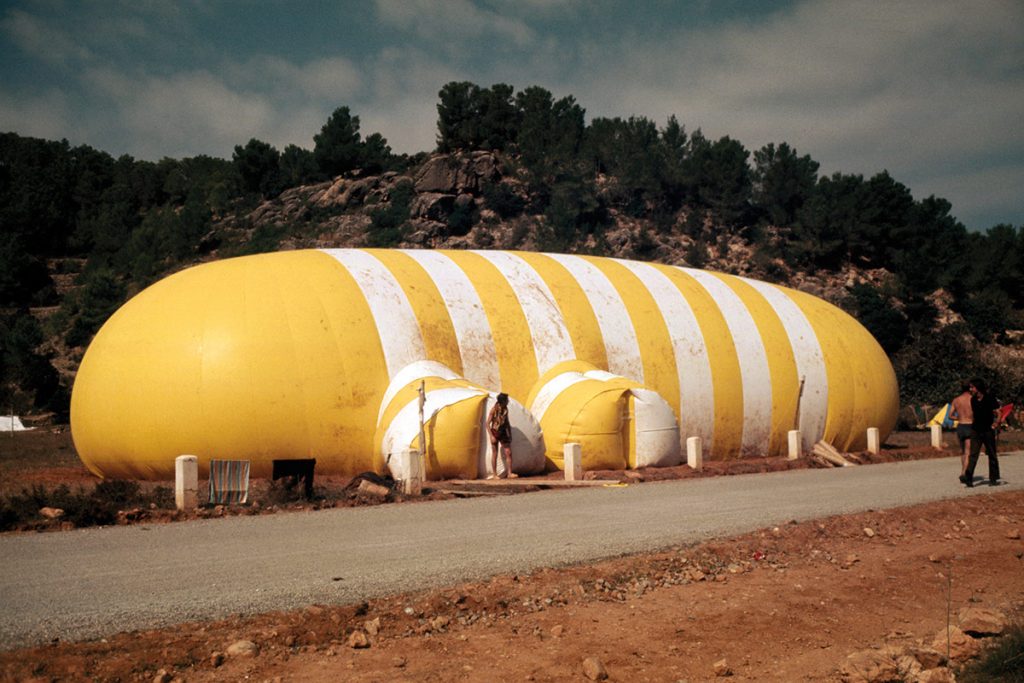
Carlos Ferrater and Fernando Bendito, architecture students, devised the project of a self-built instant city, self-managed by its own residents. Together with Luis Racionero, they drafted the manifesto to convene students from all over the world to design and create the “Instant City”. André Ricard and Daniel Giralt-Miracle proposed the island of Ibiza as the location for it to be built.
It was a call to the imagination and an experiment in community living with the construction of an ephemeral city. The conceptualisation and development of this city was under the direction of José Miguel Prada Poole, who, with his great knowledge of the design of inflatable structures, would make this ephemeral city a reality. Starting with a minimal infrastructure and the contribution of basic knowledge for its construction, the congress participants themselves were responsible for the construction of the city based on colourful pneumatic models for building the different rooms, circulation areas and common spaces.
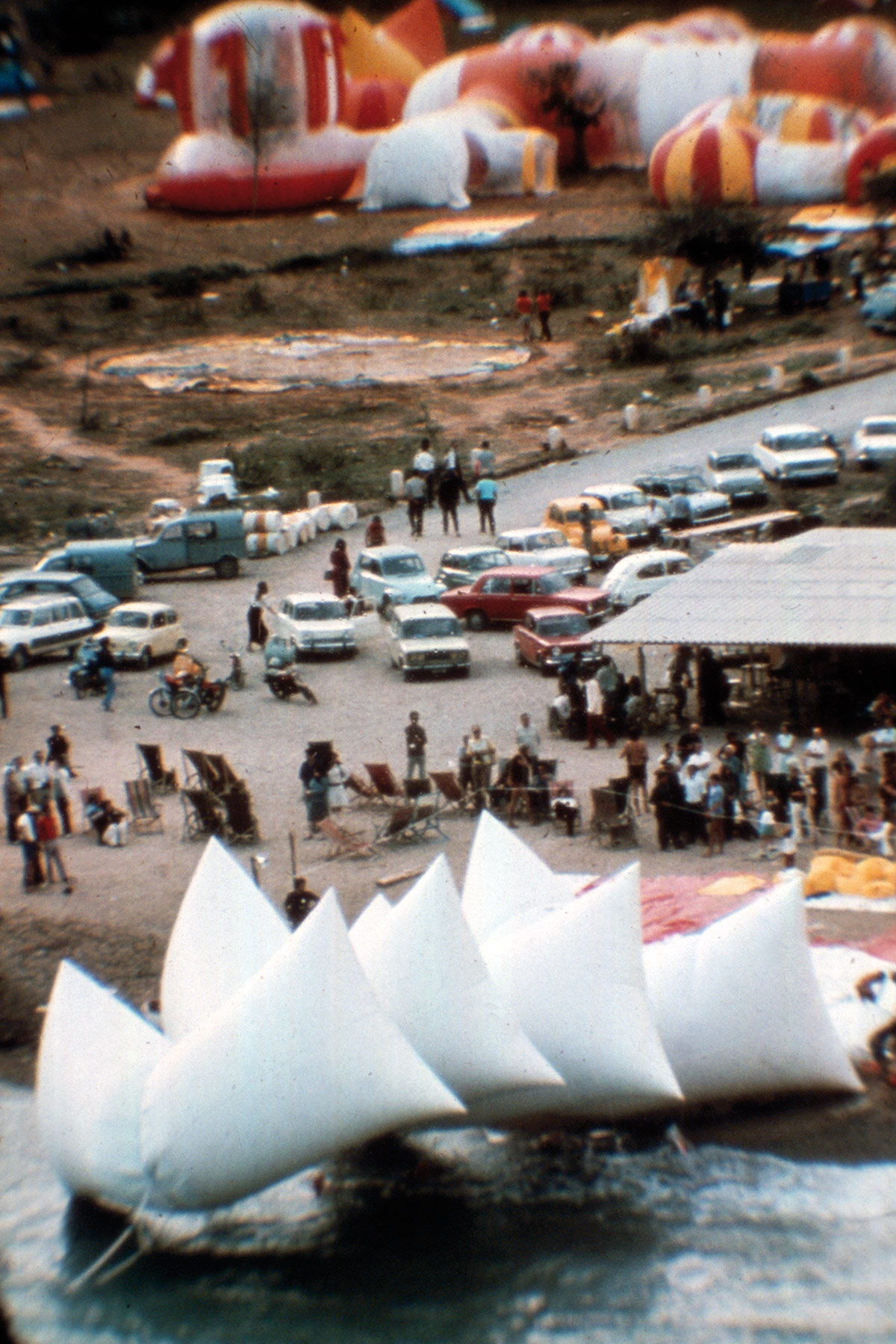
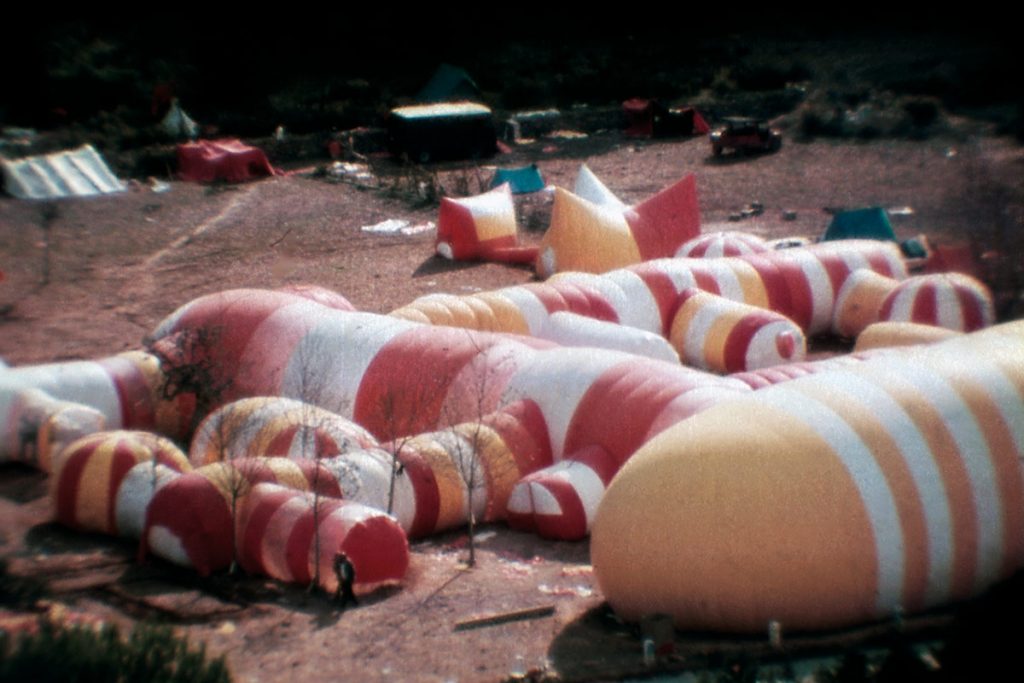
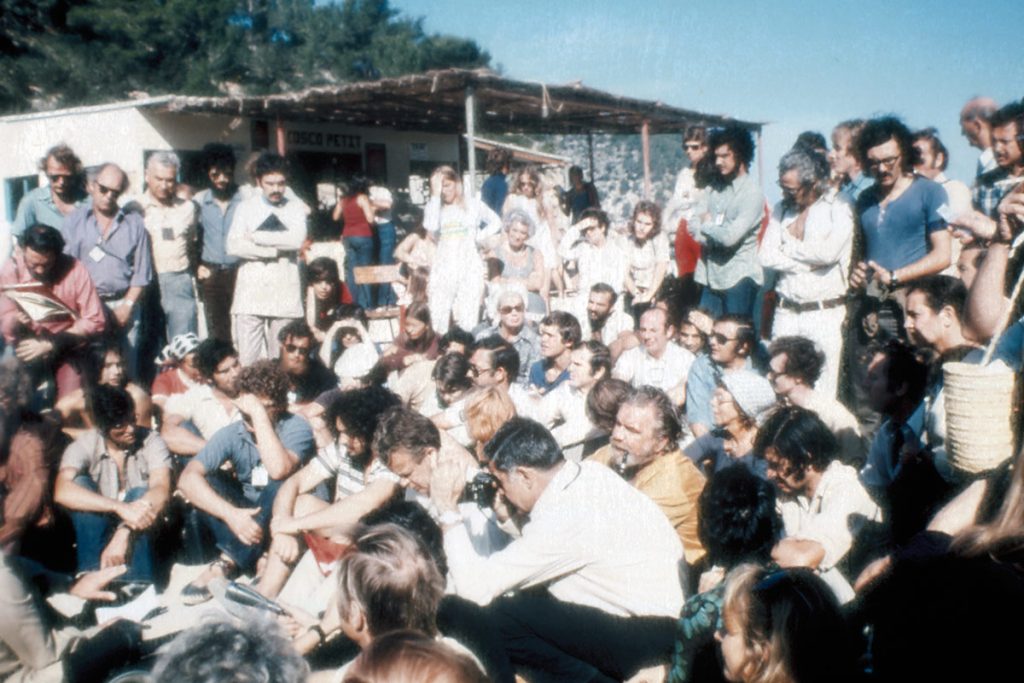
Memories of a lost city
I was 10 years old that year. My father, an industrial designer and interior designer, and my sister, who was still studying design, went to the congress together. At that time, I remember being at home in Barcelona and hearing that some of my sisters’ friends had become hippies and were living in one of the communes in Ibiza. That seemed exciting to me and my intuition told me that the world around me had nothing to do with the air that came from that island. It sounded to me like something mysterious and forbidden. I was still a child and I wasn’t lucky enough to be taken with them to Ibiza. I had to settle for watching the images that arrived from the event, some of my father’s slides, or fiddling with the colourful costumes and masks that my sister brought back with her.
With fond memories, I remember those blue and yellow buns from the event organised by Antoni Miralda. I remember the installation as an inflatable city, where students and visitors slept in sleeping bags inside a giant bubble of colour, which I will marvel at for the rest of my life. It all seemed totally magical to me, extraordinary, different and absolutely new. It smelled of freedom! The same freedom of those summers in the village where we used to go on holiday, when they let me leave the house and I didn’t come back until nightfall. The mixture of that modernity in a rural and traditional environment fascinated me. The little old ladies dressed in black with the traditional scarves and straw hats, contrasted with those huge coloured shapes, seemed to me both contradictory and fitting.
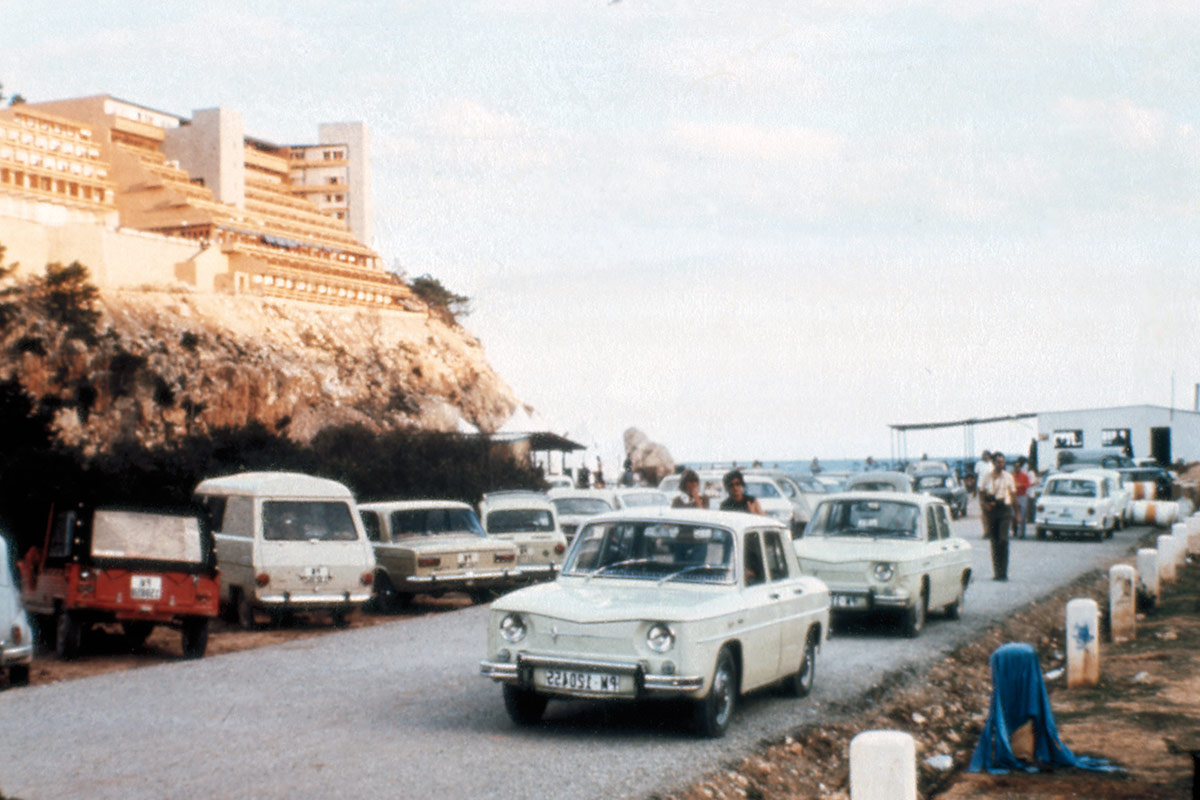
I was so impressed by all the images that I saw. When I looked at them, something moved inside me. Not in circuses, nor at village festivals, nor even in Walt Disney films was there such an explosion of colour. At that time, little girls still wore cheviot pinafores and white socks. Our mothers used to put white foam rubber bands in our hair and, of course, television was still in black and white. I have always thought that everything that showed me a way, a different point of view of the world, or at least a different way of dreaming about it, was a sign, and I thou- ght that maybe one day I too could dedicate myself to something special.
Proof that it was indeed an incredible event came in the form of several artistic interventions, such as the inflatable sculpture by Josep Ponsatí, made up of white balloons in the water of the Sant Miquel cove, or a green tube that snaked through the water for several days, as well as the work of Gonzalo Mezza. There was also a concert by Pau Riba and several exhibitions by ar- tists such as Dalí, Miró, Fautrier, Fontana and Tàpies. The ICSID 71 design congress was a congress that was suppo- sed to revolutionise the format, content and participation of the speakers, students and visitors who came from all over the world. That was not the case however, ICSID 71 was an innovative congress full of creativity, colour and splendour that was never to be repeated.
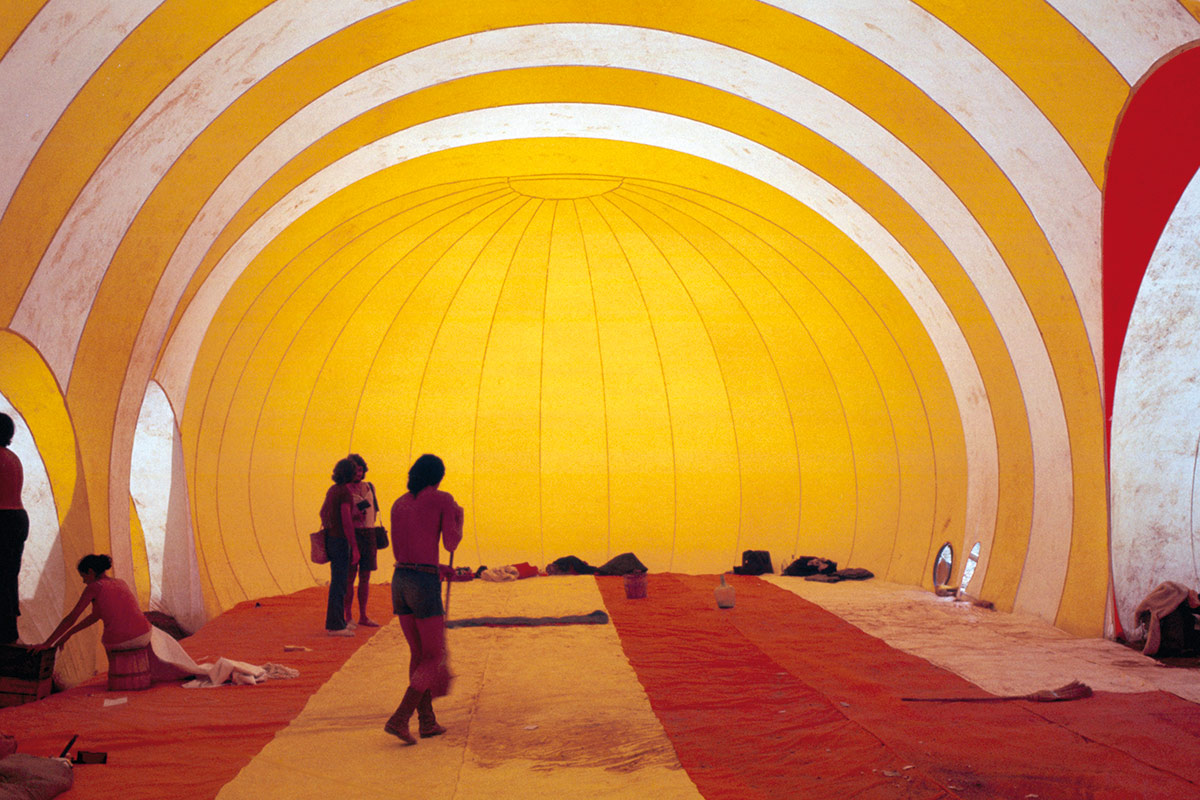
“It was a project with enormous energy, a mixture of creative and cultural aspects, with a lot of playful potential, favoured by the Ibiza of the moment that led to my move into the world of cinema”. Bigas Luna. Film director.
For the philosopher Xavier Rubert de Ventós, the event brought a new form of behaviour, of anti-crisis, critical of fashions marked by the freedom of sexuality, the introduction of the contraceptive pill and the arrival of AIDS.
“Instant City was a new path for many rebellious people that would eventually become the enlightened culture” Daniel Giralt Miracle. Member of the congress organising committee.
“The congress was a success and the only failure was not to repeat it”. Joan Antoni Blanc, secretary of the congress.
